Last Updated on 05/01/2025 by Kimberly
Understanding the role of the fleas natural predator is key to keeping flea populations in check. These predators play a massive role in maintaining a balanced ecosystem. Fleas might seem insignificant, but they have a major impact on both pets and humans. When we talk about pests, fleas are often at the top of the list because they multiply quickly and can transmit diseases.
The presence of natural flea predators helps manage flea populations without the need for harmful chemicals. This method of pest control is sustainable and safe, reducing the need for insecticides that can harm other parts of the ecosystem. Flea predators include a variety of animals and organisms, each playing a unique role in keeping flea numbers down.
Environmental impact is another reason to support natural predator relationships. Fleas aren’t just annoying for pets; they can cause significant ecological disturbances. For instance, when flea populations explode, they affect the health of animals that sustain them. Plus, the chemicals used to control flea infestations often harm more than just fleas, disrupting soil health and harming beneficial insects.
Natural flea predators not only help control pest populations but also maintain the biodiversity and natural beauty of our environments. By supporting these predators, we contribute to a balanced ecosystem where all creatures have their role. Small changes, like supporting frog populations or using beneficial nematodes, make a big difference. Embracing these natural methods promotes a healthier interaction with our environment.
In this article, we’ll explore various natural flea predators, their roles, and how they benefit the ecosystem. Understanding these relationships empowers us to manage flea issues in an eco-friendly way.
Frogs – Fleas Natural Predator: The Amphibian Flea Fighters
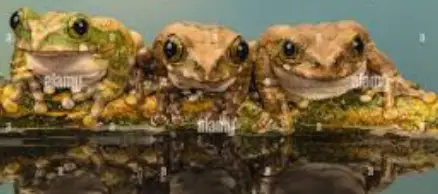
Frogs are incredible when it comes to controlling flea populations. These amphibians don’t just hop around ponds; they actively hunt and consume fleas. This makes them valuable allies in keeping flea numbers manageable.
Different species of frogs are known for their flea-eating habits. Whether it’s tree frogs, bullfrogs, or other types, they all contribute to reducing fleas. Frogs have a voracious appetite and consume fleas in various stages of their life cycle, from larvae to adults.
The way frogs hunt is fascinating. They rely on their keen eyesight and swift, sticky tongues to catch fleas and other insects. Frogs are primarily nocturnal hunters, coming out at night when fleas are more active, which maximizes their impact on controlling flea populations.
Supporting local frog populations starts with creating a frog-friendly environment. This involves providing clean water sources like ponds or water gardens and ensuring there are plenty of hiding spots, like rocks and logs. Minimizing the use of pesticides and chemicals is critical since these can harm frogs and other beneficial creatures.
The ecological impact of frogs goes beyond just flea control. By eating fleas, frogs help break the flea life cycle, reducing future infestations. Additionally, they contribute to the overall health of the ecosystem by maintaining balanced insect populations. Frogs also act as bioindicators, signaling the health of the environment through their presence or absence.
Incorporating frogs into your yard or garden isn’t just about pest control; it’s about fostering a richer, more diverse ecosystem. With their help, flea problems can become a thing of the past while you enjoy watching these fascinating amphibians thrive.
Snakes- Fleas Natural Predator – Slithering Saviors:

Snakes are often misunderstood creatures, but they play a critical role in controlling flea populations. Certain snakes, especially smaller species like garter snakes, actively hunt and consume fleas, making them valuable players in the ecosystem.
These snakes employ various hunting techniques to find and eat fleas. Some may slither through grass and soil, targeting fleas at different life stages. Others might hunt around water sources where fleas and other insects aggregate. The presence of these snakes creates a natural barrier against flea infestations.
Among their many benefits, snakes help balance the local ecosystem by controlling the populations of fleas and other pests. This reduces the need for chemical treatments, which can be harmful to the environment.
Supporting snake populations in your yard is surprisingly straightforward. Providing natural landscapes with plenty of hiding spots, such as rocks, logs, and native plants, can attract these helpful reptiles. Minimizing chemical use and protecting their natural habitats can also encourage their presence.
The contributions of snakes to flea control extend beyond just eating fleas. They help maintain the equilibrium of the ecosystem, keeping other pest populations in check as well. By allowing snakes to thrive, you foster a healthier environment that manages pests naturally.
Embracing snakes as part of your pest control strategy involves a mindset shift. Instead of viewing them as threats, recognizing their role in the natural order helps build a sustainable approach to managing fleas. Supporting these slithering saviors means fewer fleas and a more balanced ecosystem overall.
Spiders – Fleas Natural Predators – Eight Legged Allies:
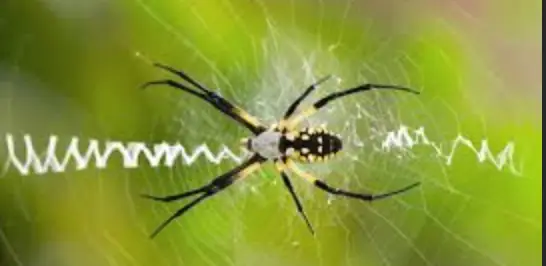
Spiders often get a bad rap, but they are surprisingly effective at controlling flea populations. Various types of spiders, including common house spiders and jumping spiders, will prey on fleas, reducing their numbers naturally.
Spiders use their webs to trap fleas and other insects. Some species actively hunt down fleas, making them versatile and effective pest controllers. When a flea gets caught in a spider’s web, it’s game over for the flea, as the spider quickly wraps it up and consumes it.
Encouraging spiders in your garden or home isn’t as daunting as it sounds. Start by avoiding the urge to kill every spider you see. Many are harmless and actually beneficial. Creating a spider-friendly environment means preserving natural habitats like wood piles, leaves, and undisturbed nooks and crannies.
Spiders contribute to flea control by interrupting the flea life cycle. By capturing fleas at various stages, they prevent the pests from maturing and reproducing. This natural method helps reduce future flea infestations effectively.
Additionally, spiders help control other insect populations, contributing to a healthy and balanced ecosystem. Their presence indicates a functioning and sustainable habitat where natural predation keeps pest levels in check.
To reap the benefits of spiders, reduce pesticide usage as these chemicals can harm spider populations. Instead, encourage natural habitats and understand that having spiders around means fewer fleas and a healthier environment overall.
The role of spiders in flea control highlights the importance of allowing natural predators to thrive. They are an essential part of an integrated pest management system that benefits both your surroundings and your peace of mind.
Beneficial Nematodes – Fleas Natural Predators – Microscopic Warriors:
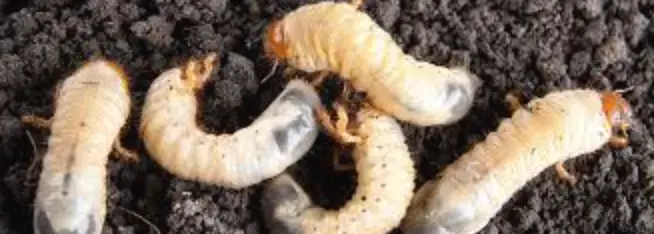
Beneficial nematodes are tiny, yet mighty, allies in the battle against fleas. These microscopic roundworms naturally occur in soil and have a specific knack for targeting flea larvae and pupae. By invading the bodies of flea larvae, they release bacteria that, in turn, kills the host. This makes nematodes highly effective at reducing flea populations at their most vulnerable stages.
One of the most appealing aspects of using beneficial nematodes is their safety. They pose no threat to humans, pets, or other wildlife, making them a superb option for households with children or animals. Nematodes are natural and eco-friendly, helping you avoid the adverse effects of chemical pesticides.
Incorporating nematodes into your pest control routine is relatively simple. These organisms can be purchased in a ready-to-use form from garden centers or online. Once you have them, mix the nematodes with water and apply the solution to your lawn, garden, or any other area where fleas may breed. They go to work immediately, infiltrating the soil and seeking out flea larvae.
The effectiveness of nematodes in controlling fleas cannot be overstated. They offer a long-term solution as they continue to reproduce and hunt fleas over time. Compared to chemical alternatives, nematodes provide a sustainable and ongoing method of flea control that bolsters natural predator relationships.
Using beneficial nematodes also strengthens the resilience of your yard’s ecosystem. They help maintain soil health, curbing pests without disrupting the balance of beneficial organisms. This contributes to a more vibrant and thriving environment, free from the proliferation of fleas.
Supporting these microscopic warriors involves minimal effort but yields significant results. By adopting nematodes as part of your pest management strategy, you’ll enjoy a naturally balanced yard that effectively keeps flea populations under control.
The Domino Effect: Impact of Killing Flea Predators
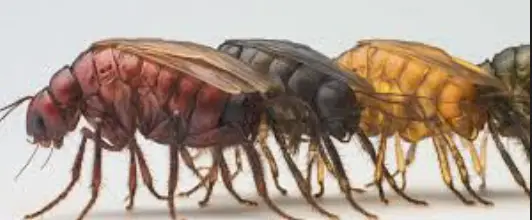
Eliminating natural flea predators from an environment sets off a chain reaction that affects the entire ecosystem. When these predators are removed, the balance between pests and their natural controllers is disrupted. This imbalance often leads to a rapid increase in flea populations, making infestations more severe and harder to manage.
The Fleas Natural Predators
like frogs, snakes, spiders, and beneficial nematodes, each play a specific role in keeping flea numbers in check. Without them, fleas rapidly complete their life cycle, infesting homes, yards, and pets. This leads to over-reliance on chemical treatments, which can have harmful effects not just on fleas but also on beneficial insects, soil health, and water quality.
Chemical treatments, while effective initially, offer only a temporary solution and do not address the root cause of flea infestations. In contrast, natural predators provide a sustainable and ongoing method of pest control. By relying on chemicals, you may kill non-target species, including those that help maintain the ecosystem’s health and balance.
The absence of natural predators also means losing out on the additional benefits they offer. For instance, frogs and snakes contribute to broader biodiversity, while spiders control various insect populations. Beneficial nematodes improve soil health, fostering a rich and fertile environment. When these predators are killed off, their ecosystem services are lost too.
Protecting And Encouraging The Fleas Natural Predators
ensures long-term pest control. Strategies include reducing pesticide use, fostering habitats that attract and support these predators, and educating others about their importance. Simple changes, like installing a garden pond to attract frogs or leaving leaf litter for spiders, can make a big difference.
It’s worth noting that flea predators often control other pests as well. A thriving population of natural flea predators can reduce the need for any kind of pest control measures, leading to a healthier, self-sustaining ecosystem. Embracing an eco-friendly pest management approach aligns with broader environmental conservation goals, benefiting both your immediate surroundings and the planet.
Encouraging Fleas Natural Predators = Sustainable Flea Control:
Promoting a balanced ecosystem is key to effective and sustainable flea control. Supporting natural flea predators creates a healthy environment that keeps flea populations in check without relying on chemicals. This approach involves a few straightforward steps that anyone can implement.
Start by creating habitats that attract natural flea predators. Adding a small pond or water feature can draw frogs to your yard. Maintaining areas with rocks, logs, and dense vegetation provides hiding and hunting spots for snakes. Allowing some undisturbed spaces, like leaf litter or wood piles, encourages spiders to make themselves at home.
Avoiding The Use Of Pesticides And Chemical Treatments Is Crucial.
These substances often harm the very predators you’re trying to support. Opt for organic or natural gardening methods that protect and nurture your yard’s beneficial inhabitants. This might include using compost and mulch to enrich the soil, which, in turn, supports a robust ecosystem.
Introducing beneficial nematodes to your garden is another excellent step. These microscopic warriors are easy to apply and continue to work over time, providing long-term control of flea populations by targeting their larvae and pupae in the soil.
Educating your community about the importance of natural flea predators can have a broader impact. Sharing information about eco-friendly pest control methods and the benefits of maintaining biodiversity can encourage others to adopt similar practices. This collective effort can lead to healthier neighborhoods and more resilient local ecosystems.
Also, consider supporting local wildlife conservation efforts. Many organizations focus on preserving habitats that benefit natural predators. By participating in or donating to these efforts, you contribute to wider ecological balance beyond your own backyard.
Embracing a more natural approach to flea control doesn’t just help with flea issues; it fosters a thriving, diverse ecosystem. In the battle against fleas, nature truly knows best. By supporting natural flea predators, you create a harmonious environment where every creature plays its part in maintaining balance.
In Conclusion To What Is The Fleas Natural Predator
I hope you found the information you were looking for to help combat fleas naturally with the fleas predators that nature provides for us. If you have any questions about flea predators or would like to share with us about any others that you have found useful in the combat against fleas, please leave them in the comments section.
Thank you for visiting Fleas B Gone have a great day 🙂

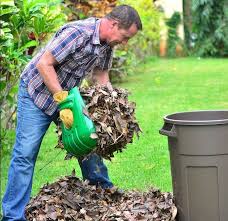
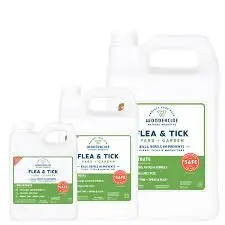

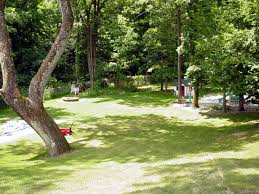
How to get rid of fleas, Naturally, Inexpensive and safely. BORAX! Good ole, twenty mule team borax. NOTE: This is NOT safe for PETS until the process is finished. It is not difficult to do at all. You simply go to dollar general, Walmart or most grocery stores and get a box of borax. (approx. $3.00) Just before it rains (or you can use a sprinkler/garden hose); put your pets inside or removed from the area you wish to treat. Simply sprinkle borax liberally around the yard…toss it in the air, let the breeze/wind help spread it.. basically you want to dust everything/everywhere in your yard with borax..Yeehaw! (sounds like fun doesn’t it) Try not to breath the stuff in.. I recommend using a dust mask when doing this. Let that dust hang out for a little while.. and hour or two is fine.. then wash it into the ground using the hose, sprinklers, or rains. What you are doing is putting Boron into the earth around your yard. Boron is a natural insecticide and will control many aggravating insects/pests in your yard. Now then; with everything all washed down into the earth, and the yard all cleaned up again: It will now be SAFE to let the pets and children play in the yard free from fleas, ticks, mites, ants, and many others. Note: This is also safe and effective around vegetables, fruit trees etc. It will not effect taste or quality of produce.
Thank you Mark for sharing!!
Kimberly 🙂
I have large amount of ant hills in my yard and field . Sometimes I joke Nova Scotia is an ant hill. It does get colder here in the winter and if we get a spell of – 15 cel. than there are less of all bugs including fleas biting flies and mosquitos. I was thinking about using DE on the ants but I might leave them now! we have small toads and frogs little green garter snakes bees and butterflies and giant to tiny moths. we lost are bat to white nose really makes you think twice about killing something off as are many more mosquitos and moths now. for hard wood and fleas fill saucer or small plate with sunlight dish soap and water 50/50 ish and angel a desk lamp to shine on it fleas will jump in and drowned. I have no idea, why I say it is a help rather than miracle cure.
Thank you for sharing Meg 🙂 Kimberly
What snake eats fleas.? I can’t find that info.
Hello Max, I honestly don’t if all snakes would eat fleas but from what I’ve found looking into it is that garter snakes do eat fleas. I would think probably snakes like boas and other types of more aggressive carnivore eating snakes wouldn’t even be interested in fleas being that they are so small. I’ll keep looking into it to hopefully find some answers to your question.
If you happen to find anymore information on it please share with us here!! 🙂
Kimberly
I have seen you change your answers all thru the months of people dealing with fleas, from borax to worms, to dirt to salt and now a chemical spray that is 25.00 for 16 oz. Times 1500 sq feet. Again not good. It say a steam cleaner, but in Florida, this has been an insane year, Now I have ants EVERYWHERE in the house, thus why I wondered of the connection.
Hello Mechelle, it has been a bad year for pests here in NY as well so I can sympathize. There are different suggestions depending on what others are dealing with and whether they use chemicals or not. Wondercide is all natural and doesn’t contain any chemicals. Borax is a chemical that states to keep away from children and pets, it is commonly used as a laundry booster. The worms your talking about are beneficial nematodes I believe and are used outside to control fleas without harming the natural environment. The dirt, I believe you’re talking about DE, that is used indoors and in a natural way as well to kill fleas as is salt. The steam cleaners are an excellent way to remove fleas and it’s stages from your home and will work very well while treating your home for fleas.
The Wondercide can be purchased in bulk form if you have a larger area to treat inside your home. This is not a chemical product it is perfectly safe to spray directly on your pets, on your furniture and floors, anywhere you have a fleas, ants or any other pests. I found this about a year ago and can’t say enough wonderful things about it. This product works very well and I use it on my pets as their monthly flea treatment. I spray it on them and comb it down to their skin, I haven’t had a problem with fleas or ticks since using this. It will kill the ants as well along with spiders and other pests all without causing any harm to you, your family or pets.
The Wondercide is $39.99 for 2 32oz bottles, lemongrass and cedar scents. This will treat 1500 total square feet. For $99.00 you can purchase 2 gallons of Wondercide which will cover 3000 square feet and again one is lemongrass and one is cedar scented.
I understand that this may seem to be expensive but it is extremely effective and will have a lasting effect if used as a monthly preventative measure after you use it to initially kill all of the ants and fleas in your home.
I hope that this will help you and please let me know if I can help you any further 🙂
Kimberly
Kimberly,
We moved from Colorado to Virginia and our problems began. First, had four months of toxic mold in our daughter’s basement where we were living. The dogs and my husband and I got very sick.
Then we bought a home four months later and had a good four months. We moved in December and in April our poor flat coat got three nasty ticks and ended up with Lyme’s disease. After a horrid bout with that we have had a flea and flying insect infestation in this home. It’s been a year from hell since we moved to Virginia.
We’ve tried brushing Borax into the wood floors for a few hours and sweeping, steaming our couch and spraying it with essential oils for bed bugs, etc. We’ve tried three or four sprays, cleaning the floors daily with a vacuum and eventually resorted to misting our carpet with chlorine bleach and water. That mistake ruined our carpet and yet we were desperate.
Nothing is working. We’ve tried a very expensive Green Kleen ($75 a gallon), a witch hazel, tea tree oil and Listerine spray.
I’m at my wits end. My dog loves to lie in the yard and we’ve had to vacuum her off each time she comes in the house.
I’m nearing a nervous breakdown–and that’s no lie. We can’t walk anywhere in our home (and now in our car) without getting nicked by something. We can’t sleep at night. It’s overwhelming. Been going on since April and it’s now mid-October.
I’m almost thinking of moving back to Colorado, but my kids are here.
Do you have any 100% assurance anything will work?
Thanks,
Pat
Hello Pat, WOW!!! That’s a lot to deal with in a years time… I’m truly sorry that you’ve been through all of this. Yes, I do believe that Wondercide spray for your pets and home will work for you. This is all natural so it’s safe for you to breath in, safe for pets and your living environment and the best part is it works immediately!
First use the Wondercide Flea and Tick Control For Home and Pets. Spray this directly on your pets and comb through the coat directly to the skin. You will see the fleas dying instantly! Then continue using this weekly on your pets until you have the flea problem controlled. This will keep ticks off of your pets as well. If you see one on them just spray directly on the tick and it will die instantly allowing you to pull it off of your pets easily. Use the same spray directly on your furniture, bedding, carpets and flooring! Absolutely everywhere you have seen the fleas, like I said previously this is completely non-toxic and works tremendously well! Continue with your vacuuming as you have been and use the Wondercide to mop your floors, just follow the directions right on the bottle.
Next, use the Wondercide For Yard Flea Control . Follow the directions on the bottle and spray your yard everywhere you and your pets like to be outside. You will see a huge improvement with fleas and ticks in your yard, allowing your pets and yourselves to be outside without the worry of bringing anymore critters inside your home.
As for the flying insects inside your home, this should eliminate the problem as well. Spray directly on your curtains and just in the air, just like an air freshener, when you see the insects. After your home has been treated with the Wondercide there will be a huge improvement with bugs of all sorts in your home. This stuff even kills spiders and rodents don’t like it much either 😉
Again this is all natural and doesn’t stain at all. I’ve sprayed it on my furniture, bedding, floors, carpets and curtains, nothing has ever been left with any stains at all plus this stuff smells really good!
I hope this helps you and if I can help you with anything else please let me know!! I hope that after you get this pest problem under control you will start to really enjoy your new home 🙂
Kimberly
Hey Kimberly!
I hate fleas so much that compared to them I’d love mosquitos as pets. Nice article 😉 I’m thinking getting me dozens of snakes and lizards, as nothing else seem to work.
I gotta ask you about salt. I’m considering trying that. Right now I have a few test subjects in a glass of salt and about 3 hours later they still don’t show any behavioral deviations yet. So I’m skeptical that it would help my problem efficiently with them on a battlefield. They’d probably just move to some other area if the salt would bother them.
Here’s my problem. Third year in a row in late July they start showing up and they linger on until the end of September. I kill just one to a few per day in July and then the number grows in August and I have to kill 5-20 per day. I use white socks as countermeasures and drown everyone that jumps on me, with certain amount of joy watching them die if I may add.
My biggest mystery is that they only lurk in a single spot in the house (and not in any other of the rooms), in a corridor about 3×3 sq. meters. However, it is the spot that is a crossroad for every person in the house and one cat. I know that fleas, dumb as they are, still know where most traffic goes. And you have to know that I don’t have any rugs in the house and that there isn’t any furniture in the vicinity from where they could spur (it’s just tiles and treated wooden stairs). Nor I can find them in any other room in the house and I’ve tried hard.
I don’t believe the cat could bring 5-20 per day in the house and that they would all jump of her right there. Plus the cat is regularly bathed and has Frontline.
Also, past two years I’ve tried dozens of various poisons to try to get rid of them. Last year two times per week, first I mopped the floors clean and then I applied anti-flea poison, not only to the floors, but every edge and crack that was just a bit suspicious or not at all. But all that it didn’t even seem to bother them at all. They were back as soon as it dried – the poison didn’t seem to have any effects – and I haven’t the slightest where they could come from. My corridors are really sterile (except when I turn it into a gas warzone).
And I’ve tested many various poisons. The last one I’ve tried was recommended by someone with experience in this field. And on his suggestion I used anti-flea poison that was effectively used to suppress these pests in barns, so it was super strong. No luck either. Nonchalantly they returned as if they’re mocking me.
My penultimate resort would be salt.
Another thing just occurred to me. Can be fleas seen under UV light at night? Like scorpions. So I could research further where they could be hiding or at least coming from.
Hello Frank, using all the poisons with your pets is probably not a great idea. This could cause them a lot more harm than good. I would highly recommend Wondercide This is an all naturual product that works on contact with all of the flea stages. This won’t harm you or your pets and if you use it regularly you will see all the fleas cycles die. You can spray this directly on your pets along with floors, furniture, carpets, etc. There is also a Wondercide for outdoors that will not kill off the natural flea predators or any of your flowers and trees.
Thank you for all of your input on the products that you’ve tried!!! I truly appreciate all of your information that you’ve shared with all of us!!
Best of luck with your flea control 🙂
Kimberly
I now this is from 2015 but I thought I would add something that you could inform your readers about. Flea’s, like and living thing needs 3 conditions to thrive. High Humidity (or a water source), warmth, and food supply. So if you live in an area that has high humility you may experience a flea problem. If your home is cluttered and has lots of organic material laying around and food sources like, cardboard, pet food, and pets, etc..), the flea’s and their larva will have a food source. Flea larva will eat anything that is organic and they LOVE flea feces. If you live in a hot and humid area and have pets or wildlife around then you will fight flea’s. Salt, DE, and Boratic powders will NOT work if your home or area is humid. These products need a dry area to work. If you use these products (which all of them DO work) then make sure to run a dehumidifier or air conditioner. Everyone needs to remember that the flea pupae can live dormant for a year waiting for the right conditions to come around. Fleas can live up to 100 days. So when you know your enemy, you can then eliminate them by eliminating at least one vital need of theirs to survive. Fleas need the humidity because it helps keep their exoskeletons from cracking. Once the exoskeleton cracks the flea will dehydrate without a water supply. Fleas cannot take direct sunlight but they are attracted to light so any light, and heat source will attract them. If you have a flea problem in your yard more than likely it is heavily shaded so trim your vegetation like trees to allow the sunlight to hit your yard. The exception is sand fleas to this rule, they can take more direct sun. A flea will die in a week without a food source. Like I stated earlier, once you know your enemy, you can defeat them pretty easily.
Thank you Penny!! I’m very sure this can help others 🙂
Kimberly
I am a friend of the earth which means I really don’t like killing anything that is living as I believe all life is sacred and has a purpose. Still when it comes to fleas.. I have battled with these for a while now and they are really pesky little critters.. I have used Diatomaceous earth inside and outside the house but it didn’t wipe out the problem.. I also know that DE will kill other bugs too so I didn’t like using it and it made such a mess and clogged my hoover up so it wasn’t the solution at all.. I know the fleas are living in my grass and every time my dog goes out they jump back on her.. its been a night mare… I did buy some flea nematodes and used those and they didn’t work either.. well they may have reduced the problem but they didn’t get rid of it completely.. I got thinking about what other critters would eat the fleas and thoughts about Ants.. You see I have a nest of Ants and Flying ants all in my lawn and somehow i felt they had come to help me.. Upon searching Google I found this site and pleased to see that yes Ants do eat fleas so I am leaving the ants to do their job.. As I type I can see the flying ants wandering around in the grass.. Im like.. “Feast your self boys and girls… go eat those fleas for me!”.. I feel happy to know nature is taking it course.. the ants are getting plenty to eat and I am feeling optimistic that they will help with my dog’s flea issues.. 😉 By they way for anyone reading this.. I found that if you melt some coconut oil in your hands and rub it through your dog’s coat its kills the fleas on contact and prevents more from jumping on and laying eggs.. your dog maybe a bit greasy for a few days but it soon soaks in and gives them a glossy shine.. Really good for them if they lick it off too.. You can use hemp oil too.. its a little thinner and easier to spread in the coat.. again very good for the dogs if they lick it off themselves. Good luck everyone on your natural defleaing.. 😉
Thank you very much for your information Nikki 🙂 I’ll actually write a post about the coconut oil and hemp oil that you’ve suggested! I never heard about that solution and being all natural and actually healthy for your pet if they lick it off is and incredible solution! Thank you again for your helpful information!!!
Have a Great Day! 🙂
Kimberly
Thank you, very nice post
Thank you Nikki 🙂
My family’s not fond of online shopping and buying stuff that helps in stores and having professionals do the work are pricy. I’m currently blabbing about fleas, don’t know what to do about it for myself and I’m becoming annoying to my entire family. What should I do?
Hello Orio, I left you some suggestions to find the DE with your other comment. I would recommend checking your local hardware and agricultural stores, anyplace that would sell things like horse feed, top soil and fertilizers. Usually they would also have DE to purchase as well, if they don’t I’d ask them if they could order it for you especially if you don’t like buying through the internet. If you still can’t find a place to purchase DE you can purchase it here: Diatomaceous Earth through Amazon.
Best of luck, Kimberly 🙂
Also try natural fossil food grade earth. It starts w a D, but I can’t spell. Lol. Read about it.
Thank you for sharing Adeline. It’s Diatomaceous Earth that you’re referring to and it does work very well. I have more about it and a link to the product on my page, Kill Fleas Naturally. I appreciate the feedback about this natural product! If you have any other products that you’ve tried I’d love to hear your personal reviews about them!
Have a Wonderful Day 🙂 Kimberly
I have used DE and not only did it not work but it’s so messy (and yes I used it like I was supposed to and tried it for a while before deciding it didn’t work). I prefer salt. Salt works, at least for me, and it’s so much easier to clean up and it’s cheaper. One box of salt will do my whole house and it’s .49c to $1 depending on brand and store. Don’t know about using it outside since I hear it will kill plants and grass but indoors I love it.
Thank you for sharing Ashley 🙂 .. Yes salt does work well!! You can find out more about the steps to use it here Kill Fleas Naturally with Salt. The salt kills the fleas by drying them right up causing them to die.
I’m glad you shared your experience with the Diatomaceous Earth. I had good results with it outside around my vegetation and plants, you’re right about the salt killing your grass and vegetation outside. If you find a product that works well for you outside, please let us know!
Take Care, Kimberly 🙂
Hi everyone!
I wanted to let you know about a product that my (holistic) veterinarian shared with me a few years ago. It’s called CedarCide, and it’s made from an oil from one specific cedar tree (only one is not harmful to pets, so please don’t let anyone try to use their own cedar oil on their pets). You can get CedarCide on Amazon, but I recommend at least going to the CedarCide website first so that you can see all of the products available (I don’t think Amazon sells all of them). Just to save everyone some time, some cats (and even a few sensitive pups) are sensitive to the smell (it smells like pine trees, but strong), so this year they came out with a brush that lets you brush it on their skin as an alternative to spraying it on. This product absolutely kills fleas upon contact, as well as all other biting insects (but not beneficial ones). You can spray it all over your house, too, and it won’t stain. It’s amazing.
Thank you so much for going the natural route in fighting fleas and ticks! It is definitely the right thing to do.
Hello Nancy, thank you for sharing with everyone. The CedarCide is a lot like the Wondercide, being all natural and it also uses a specific oil derived from a cedar tree that leaves out the harmful phenols and phenolic compounds that are found in regular cedar oil and be harmful to cats and other sensitive animals.
Thank you for sharing with everyone! 🙂
Kimberly